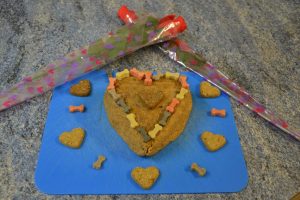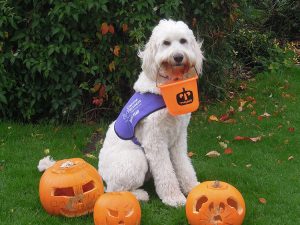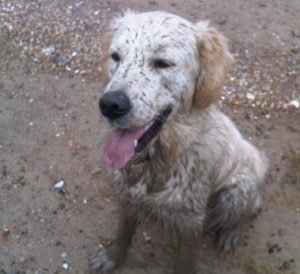 It’s that time of year when the wind is boisterous and our four-legged friends always manage to find the deepest puddles!
It’s that time of year when the wind is boisterous and our four-legged friends always manage to find the deepest puddles!
Muddy feet, dishevelled manes and a rather smelly perfume are guaranteed after a gusty wet walk but it’s important to keep your dogs well groomed to ensure that they, and your home are kept clean.
So here are our top tips to make sure your dog is clean and dry after walkies.
Wiping paws
Wiping your dogs paws after a walk is not only important to avoid paw prints across the carpet, but also for their own safety too.
At this time of year, grit can be spread on paths and roads. This grit can attach itself to your dogs paws, which they will then lick. This can cause dehydration and lead to more serious conditions.
When you return home, get your dog to sit whilst you soak their paws in water to remove the grit or any other impurities. Check each paw carefully as lodged stones and other bits picked up from the outside can become very uncomfortable. Afterwards, simply towel dry each paw.
Drying off
After wiping their paws, you should also dry their fur to prevent that “doggie” smell, and to keep the fur un-matted. Drying your dog will help them stay warm and comfortable too – as much as they might think a quick shake is enough!
Short-haired breeds like Labradors simply need a good towelling down. Golden retrievers however have longer fur, so would benefit from using a towelling bag to dry them off.
Once the dog is inside the towelling bag, give them a good rub. The towelling is really absorbent and also cleans up sand and mud.
When drying a poodle-breed, our dog welfare team recommend “squeezing” rather than rubbing with a towel. This is to avoid creating knots in their curly fur which are very difficult to comb out!
Bath time
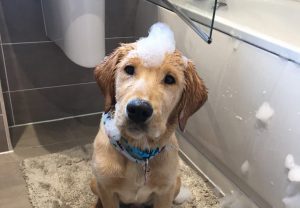 If your dog is very muddy, it is best to give them a bath. Make sure to brush your dog before a bath where possible, as water can get caught in matted fur.
If your dog is very muddy, it is best to give them a bath. Make sure to brush your dog before a bath where possible, as water can get caught in matted fur.
Use lukewarm water, with a low shower pressure, as dog’s skin can be more susceptible to heat and higher water pressure can stress them out. Larger dogs are more prone to overheating, so use a cooler temperature for them.
Shampooing your dogs will get rid of any dirt and keep them smelling fresh. Be sure to use a shampoo formulated for dogs, and to be careful around their eyes.
After their bath, towel dry as per the above instructions.
We hope you found our tips useful and that they can prevent a smelly, muddy home!
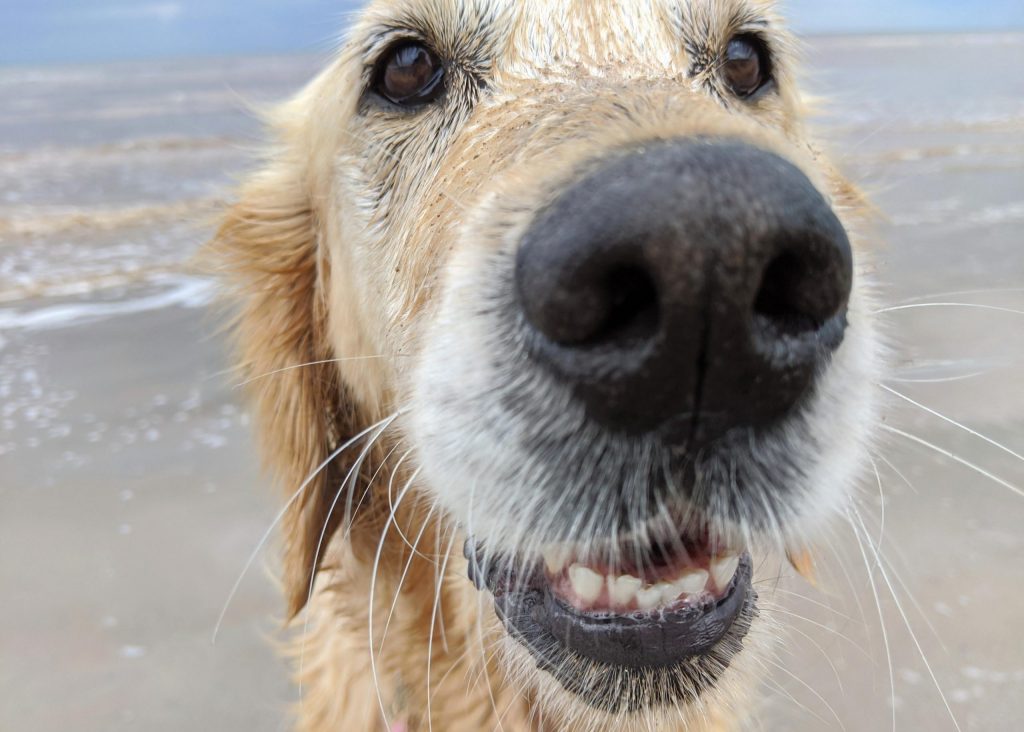

 It’s that time of year when the wind is boisterous and our four-legged friends always manage to find the deepest puddles!
It’s that time of year when the wind is boisterous and our four-legged friends always manage to find the deepest puddles! If your dog is very muddy, it is best to give them a bath. Make sure to brush your dog before a bath where possible, as water can get caught in matted fur.
If your dog is very muddy, it is best to give them a bath. Make sure to brush your dog before a bath where possible, as water can get caught in matted fur.